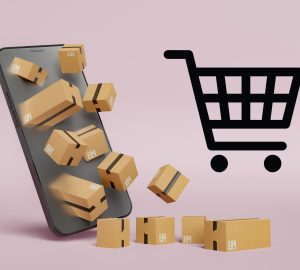by Arielle Antonio, contributor
“Thrift Shop” by Macklemore and Ryan Lewis, “Cure For The Itch” by Linkin Park and “Female Funk” by Too Short. Initially, these songs sound like they have little in common. They’re totally different from each other. How could they be connected? Well, all three songs contain a barely two-second long sample from Beside’s “Change the Beat (Female Version),” a remix of “Change the Beat (Male Version)” by American hip-hop artist, Fab 5 Freddy. According to Who Sampled, there are more than 1,000 other songs that also contain samples from this song.
Sampling has long been used in music. It was once achieved through cutting and putting together loops from tape recordings or messing around with a vinyl record on the record player. It was like a collage project, piecing together different elements to create a whole new song. Although it wasn’t until the 1960s that it really began to spread in use through hip-hop and electronica.
Artists have been known to sample whole chord progressions or melodies from someone else’s song. Some have hijacked an entire song and others have been described as sampling “vibes” from other songs. The most recent example is the controversy surrounding Robin Thicke’s “Blurred Lines” — let’s not even discuss the salacious video and lyrics — and Marvin Gaye’s “Got To Give It Up.”
But aside from the legal responsibilities that come with sampling, there are other ramifications to consider. By taking from someone else’s song and using it in your own, are you being unoriginal? Is originality in the music industry dead?
“If it’s someone like will.i.am, who wants to be number one on the radio and wants to make money, then that’s more of the greedier side. That’s where people start hating on it and stuff,” said Ross Hepner, a fourth-year advertising major and known as DJ Bassmonster at SCAD Atlanta Radio. “Then you have the other side of the world where you have even someone like me who can make a track on Garage Band and throw it up on SoundCloud. I’m just trying to get my name out there. I’m not trying to make money.”
As a music lover and a DJ, Hepner finds that more positive things are happening in the underground and unsigned territory of the music industry. “There’s a fine line between bringing new life to the old music and making something more selfish, like, for yourself to take credit for it,” he says. An example of an artist who uses a great deal of samples in a creative and original way is dubstep artist, Pretty Lights.
Dubstep is the newest genre of music that evolved from UK garage that utilizes samples. Pretty Lights, a rising star of dubstep, is known for using borrowed hip-hop and vintage soul samples. However, he recently released an album, “A Color Map of the Sun,” which is totally composed of un-borrowed samples. It has sounds that he himself generated and music he recorded from jam sessions with others. It seems that it’s all in the way samples are used together.
For instance, if you took the 1989 hit “Express Yourself” by Madonna and replaced it with, say, more electronica type sounds in the instrumentals and sped up the tempo, then sang your own lyrics to the music — wait, that’s what Lady Gaga did with “Born This Way.” Yet, is doing something like that being original? With the widespread access to production software, anyone could do the exact same thing and release it as their own.
It’s one thing to be inspired by another’s work. It’s another to capitalize on a popular and familiar sound for your own gain. Perhaps money is the root of all evil if artists like Pretty Lights are still able to release unique music, sampled sounds and all, even for free on the internet.

























